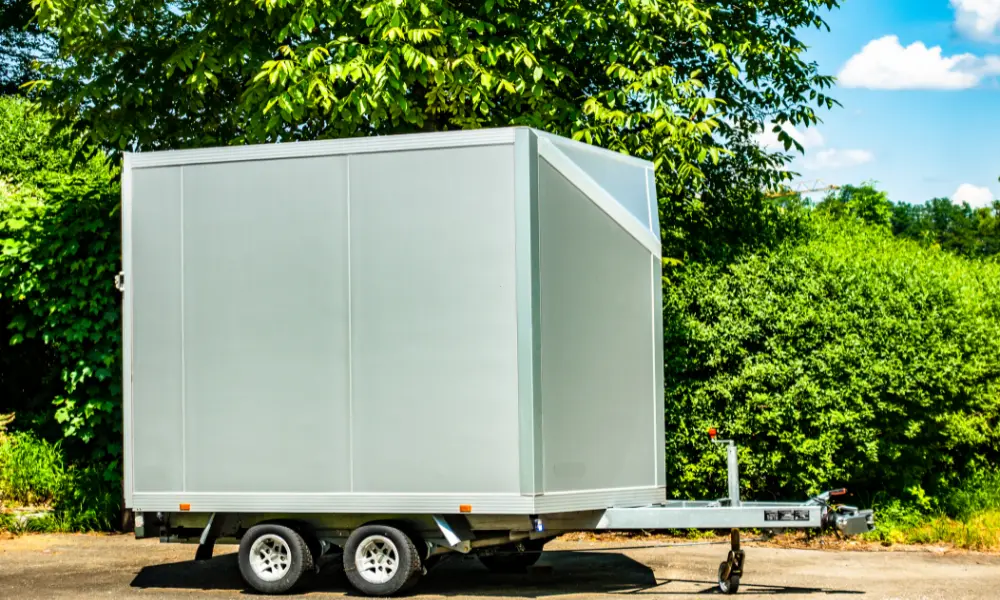Are you a first-time trailer owner feeling overwhelmed by DOT inspection requirements? You’re not alone. Understanding the Department of Transportation’s inspection checklist can save you from hefty fines and ensure the safety of your commercial vehicle. From brake connections to coupling devices, knowing what to inspect is crucial. Dive into our guide to find out how to stay compliant and keep your trailer in top shape.
Understanding DOT Trailer Inspection Requirements
Knowing the requirements for DOT trailer inspections helps ensure your safety on the road and keeps your trailer in compliance with federal standards. Key areas to focus on include the importance of compliance, the main components inspected, and the entities responsible for performing these inspections.
The Importance of Compliance
Maintaining compliance with DOT regulations is essential for every trailer owner. Failure to do so can result in penalties or even having your trailer taken out of service. Regular inspections help you avoid these issues and ensure your trailer meets safety standards, protecting you and other drivers on the road. Plus, compliance with regulations helps you avoid costly fines and potential legal issues.
Key Components of DOT Inspections
DOT inspections cover various trailer components. You must ensure that brakes, lights, and tires are in top condition. Inspectors also examine the trailer’s frame, suspension, and coupling devices. An inspection report will be issued after checking these parts, noting any violations or required repairs.
Brakes: Inspectors check for proper function and wear.
Lights: Ensure all lights are operational and visible.
Tires: Tires must have sufficient tread and no damage.
Frame and Suspension: Look for signs of damage or excessive wear.
Coupling Devices: Ensure secure attachment between trailer and towing vehicle.
Entities Involved in Inspections
Several entities perform DOT trailer inspections, including certified inspectors, state police officers, and DOT personnel. These professionals have the authority to conduct annual inspections and enforce compliance with DOT regulations. Some inspections may also be carried out at weigh stations or during roadside checks.
Certified inspection stations provide periodic inspections to ensure ongoing compliance. Mobile inspection services are available for emergency checks or when visiting a station is impractical. Understanding who is responsible for inspections helps you prepare effectively and schedule these necessary checks in advance.
Pre-Inspection Preparation
Before your trailer inspection, make sure you have all the necessary documents and find a certified inspector to check your vehicle. This will ensure you meet DOT requirements and avoid any potential issues.
Gathering Necessary Documentation
To get ready, gather all your important paperwork. This includes your trailer’s registration, proof of insurance, and any previous inspection reports. Keeping everything organized will save you time.
Check for documents related to safety devices. Ensure you have certificates for any safety equipment installed, like brakes and coupling chains. Being thorough with your paperwork can prevent delays during the inspection.
Having this documentation on hand also helps the inspector verify that your trailer meets DOT standards. It shows that you are prepared and serious about maintaining your equipment.
Identifying a Qualified Inspector
Finding a qualified inspector is crucial. They must be certified to perform DOT inspections. Look for inspectors who have proper training and certification.
Certified inspectors know what to look for. They will check tires, brakes, and other critical parts of your trailer. Make sure the inspector you choose is familiar with the specific requirements for trailers.
Talk to other trailer owners or check online reviews to find a reliable inspector. A good inspector will ensure that your trailer is safe and meets all necessary DOT regulations.
By choosing a qualified inspector, you can be confident that your trailer is in good hands.
Inspection Criteria and Procedures
Inspecting your trailer ensures that it is safe and compliant with DOT standards. Key aspects include brake systems, tires and wheels, suspension and steering systems, lighting and electrical systems, and coupling devices and cargo securement.
Reviewing Brake Systems
Your trailer’s brake system is crucial for safety. Start by inspecting the brake connections for any signs of wear or damage. Check the brake pads and shoes for thickness and ensure they aren’t cracked or worn down.
Mechanics also look at the brake drums for signs of excessive wear, scoring, or heat spotting. Don’t forget to examine the brake hoses and lines for leaks, cracks, or bulges. All components must function properly to ensure effective braking.
Checking Tires and Wheels
Your tires and wheels need to be in top condition to handle various road conditions. Inspect the tires for proper inflation levels, as underinflated or overinflated tires can be dangerous. Check for uneven wear, cuts, and punctures in the tire tread.
Make sure the tread depth meets the minimum requirements. Examine the wheels for bent rims or loose lug nuts. Properly maintained tires and wheels ensure better handling and performance.
Examining Suspension and Steering Systems
The suspension and steering systems keep your trailer stable on the road. Inspect the suspension components, such as leaf springs and shock absorbers, for signs of wear or damage. Look for broken or missing parts.
Check the steering linkage for any loose or worn-out components. Properly functioning suspension and steering systems help maintain trailer stability and control, especially during turns and on uneven roads.
Inspecting Lighting and Electrical Systems
Lighting and electrical systems are essential for visibility and signaling. Review all lights, including brake lights, turn signals, and side marker lights, to ensure they are working correctly. Replace any burnt-out bulbs immediately.
Check the electrical wiring for signs of wear, corrosion, or loose connections. Make sure the battery and any associated electronics are securely fastened and in good condition. Proper lighting and electrical systems help communicate your trailer’s movements to other drivers.
Assessing Coupling Devices and Cargo Securement
Coupling devices and cargo securement are vital for connecting the trailer and ensuring safe transport. Inspect the hitch and coupling mechanism for any signs of wear, cracks, or other damage. Make sure it locks securely.
Check that all cargo is properly secured using ties, straps, or other equipment designed for the purpose. Loose or improperly secured cargo can shift during transit, leading to accidents or damage. Properly maintained coupling devices and secure cargo ensure safe travel.
Stay vigilant with these inspections to keep your trailer safe and DOT-compliant.
Post-Inspection Follow-Up
After completing the DOT trailer inspection, it’s essential to ensure all identified issues are resolved promptly and documentation is well-maintained. This will help prevent future violations and ensure your equipment remains in good working order.
Understanding Inspection Reports
Once the inspection is done, you will receive an inspection report. This document lists everything the inspector checked, highlighting any violations or areas needing attention. It’s crucial to review this report carefully.
Look for specific terms like brakes, coupling chains, or emergency doors. Each part mentioned will have a status indicating whether it’s in compliance. Understanding these details helps prioritize repairs.
Addressing Identified Repairs
If the inspection report highlights issues, you must address them quickly. Repairs should focus on correcting any violations noted. Common repairs include fixing brake connections, signal lights, or safety markings.
Make a checklist of repairs and cross each one off as it gets done. This ensures that all identified issues are resolved properly. Keep your equipment in top shape to avoid future fines or service disruptions.
Maintaining Inspection Records
Documentation is key after any DOT inspection. Maintain a record of all inspection reports and repairs made. The FMCSA requires these records for compliance.
Set up a system to store these documents digitally or physically. Make sure each file is easy to access and well-organized. Proper record-keeping ensures you can quickly provide documentation if needed, preventing potential legal or compliance issues.
For more details, you can refer to the 49 CFR Part 396 or the FMCSA guidelines.
Special Considerations for Different Types of Trailers
When it comes to DOT trailer inspections, specific rules and considerations apply depending on the type of trailer you own. These include differences between full trailers and semi-trailers, guidelines for intermodal equipment providers, and variances in state and federal regulations.
Full Trailers Vs. Semi-Trailers
Full trailers are different from semi-trailers as they have axles at both ends and are pulled with a drawbar. Full trailers require regular inspections of both ends’ brake systems and coupling mechanisms.
Semi-trailers, on the other hand, have axles only at the rear and rely on the towing vehicle for support. They must be thoroughly checked for brake connections, suspension systems, and the kingpin.
Inspections for both types are guided by the Federal Motor Carrier Safety Administration guidelines. You must ensure all parts are in good condition and meet DOT standards to be road-ready.
Intermodal Equipment Providers
Intermodal equipment includes trailers, chassis, and containers moved by different transportation modes like ships, trains, and trucks.
Intermodal Equipment Providers (IEPs) have a unique role in maintenance because their equipment is used across various transportation methods. They must stay current with DOT requirements and coordinate with multiple agencies. Inspections should focus on the structural integrity of chassis, proper securing mechanisms, and compatibility with various transport modes.
State and Federal Regulation Variances
DOT trailer inspections are guided primarily by federal regulations, but state laws can impose additional requirements. For example, Colorado has its own set of trailer laws that might differ from federal guidelines, especially for specific types of trailers like utility or livestock ones.
Other states and even Canadian provinces and the Yukon Territory have specific regulatory nuances. Mexico also has unique requirements for trailers crossing into U.S. borders.
It’s crucial to understand both your state’s specific laws and the federal requirements, ensuring compliance with all necessary guidelines. This approach minimizes the risk of fines and ensures the safety and legality of your trailer’s operation across various jurisdictions.
Ensuring Long-Term Compliance
Maintaining compliance with DOT trailer inspection requirements is essential for safety and avoiding penalties. Focus on creating a systematic plan and training your team to ensure continued adherence.
Creating a Systematic Inspection Plan
Develop a systematic inspection plan to stay compliant with DOT regulations. Begin by scheduling regular inspections. Create a checklist covering key areas such as brakes, tire tread depth, and coupling chains.
Use tables or lists to ensure all aspects are covered:
- Tires: Inspect tread depth and inflation.
- Brakes: Check connections and brake functionality.
- Coupling: Ensure chains and devices are secure.
Perform self-inspections between official checks to catch issues early. Record all inspections to track maintenance and compliance. Establish reminders for due dates, keeping your fleet in top shape and compliant with standards.
Training for Continued Safety
Keep your team trained and certified for ongoing safety and compliance. Organize regular training sessions focusing on inspection procedures and safety protocols. Certified training programs ensure your staff is equipped with the latest guidelines.
Encourage hands-on practice to boost their confidence in conducting inspections. Use visual aids to highlight common issues and proper inspection techniques. Regular quizzes and assessments can help reinforce their learning.
By focusing on continuous training, you ensure that everyone understands the importance of compliance and maintenance, helping your team identify and rectify potential problems efficiently. This proactive approach keeps your trailers in line with DOT standards, ensuring a safe and compliant fleet.















